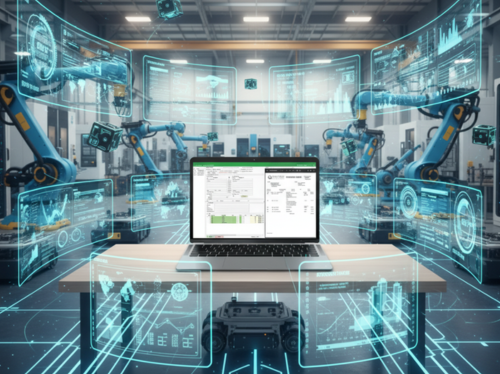The shape of things to come

In an exclusive interview, Samuel Guest, Product Manager at Protolabs, speaks with Technical Editor Steed Webzell about the company’s innovative injection-moulding capabilities
There are numerous myths around injection moulding, many of which suggest the process is expensive, complex and requires long leadtimes. Protolabs is on a mission to expose these myths for what they are: incorrect. It is time to set the record straight.
While Protolabs historically focused on the prototype market, today the company finds itself also meeting the production requirements of customers in sectors that include consumer products, medical, automotive, aerospace, electronics and many more.
“The moulding industry is shifting beneath us and we are a major contributor to this changing dynamic,” states Product Manager Samuel Guest. “More and more companies are seeking suppliers who can offer technical expertise, quality and speed in both prototyping and production projects.”
At the heart of Protolabs’ offer is automation, which allows the company to provide injection-moulded parts in lead times as short as one day in some cases.
“In this instance, we would make the tool from aerospace-grade aluminium,” says Guest. “The assumption that injection moulded parts take months is simply misplaced.”
Protolabs expedites the process by automating CAD model analysis up front, a 24-hour service provided free of charge. The company then presents any risks or issues to the customer, who in turn can choose to make design changes or accept the risks and proceed to manufacturing. Customers are able to upload their design iterations as many times as they like to get valuable feedback. Protolabs engineers are also on hand to discuss the component as part of the company’s in-house consultative design service.
“Essentially, as soon as a customer hits the order button on our e-commerce platform, the wheels are in motion, straight into automated scheduling,” explains Guest. “Automation doesn’t just enable better costings, it also supports shorter lead times. Our software is a live system, so if an urgent order arrives it will re-prioritise in real time.”
The Protolabs factory at Telford never runs at full capacity. The company sets a certain percentage of full capacity to act as a trigger point, where reaching this threshold prompts investment in more machines or personnel to remain ahead of the curve. As a general rule of thumb, component complexity determines the lead time, coming in at an average of 15 working days. The Protolabs software will offer shorter lead times (as fast as one day) at a changing premium, with customers able to decide before they order.
“We can get up to 2000 parts from a prototype tool,” reports Guest. “However, customers can pay to upgrade to a production tool with unlimited part runs. When the tool wears out we’ll simply replace it free of charge. Customers also get a reduced piece-part cost as part of the upgrade.”
Along with standard plastic injection moulding, Protolabs offers over-moulding and insert moulding, processes that are becoming increasingly popular to reduce the number of parts in an assembly. In addition, Liquid Silicone Rubber (LSR) moulding is available, which the company says few others offer, particularly as a prototyping service. Beyond moulding, companies can also turn to Protolabs for CNC machining and 3D printing.
“Most assume 3D printing is a threat to injection moulding, but injection moulding becomes cheaper than 3D printing at volumes far lower than many think,” explains Guest. “That number could be as low as 75-100 parts, at which point the tool has pretty much paid for itself. Of course, there is a place for 3D printing, but we get more and more customers asking us to 3D print a part and we find ourselves explaining that injection moulding would be cheaper and quicker in many instances. Another myth busted.”
Protolabs moulds around 4.4 million parts a month. The company recently expanded with the addition of a production facility that doubled its floor space, leading to considerable investment in machines, as well as both automation hardware and software.
“We are growing, but there’s real variety in where that growth is coming from,” conclude Guest. “We have to be very adaptable and remain industry-agnostic, so we can pivot accordingly. This is the best way to ensure we continue meeting the needs and expectations of all customers, regardless of sector or size.”








